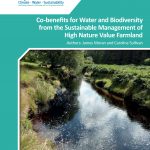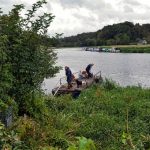Agriculture systems in Europe range from very intensive production on…
An Ebbing Tide: tell your stories and research of Ireland’s past marine biodiversity
The National Biodiversity Data Centre wants to hear your stories and research of Ireland’s past marine biodiversity for Heritage Week 2020. An Ebbing Tide is asking people across Ireland to research or recount the past biodiversity of their local coastline and submit their stories, research and photographs to us so that we can build up a picture of local marine biodiversity in times past.
Only by researching and understanding what we have lost can we appreciate the potential of what our marine habitats could look like if allowed to recover from human impacts. ‘An Ebbing Tide’ is a project for National Heritage Week 2020 and is asking people across Ireland to research or recount the past biodiversity of their local coastline and submit their stories, research and photographs to us so that we can build up a picture of local marine biodiversity in times past.
This could be recalling accounts of past angling or diving or asking a grandparent about sea life from their youth, researching old angling or diving logbooks or searching newspaper archives and government reports for information on local marine biodiversity.
“Shifting baselines are one of the greatest challenges we face in marine conservation. Each new generation accepts their natural world as ‘normal’ without the perspective of historical loss to guide their world view.
Someone who catches a pollock in their local bay today and considers that a good day’s fishing may not appreciate that their parent’s generation caught mackerel and seabass by the dozen in the same bay, while their grandparents generation caught mackerel, seabass, tope, common skate and angel shark!”
Dave Wall, Citizen Science Officer at the National Biodiversity Data Centre
Submissions should be in story / short essay format (max. 2000 words), giving us an impression of what the marine biodiversity of the coast looked like in times past. Entrants should submit photos and copies of angling/diving logbooks to accompany submissions where possible and indeed stories can be submitted in picture form with relevant picture titles and dates.

Stories and photographs can be submitted at www.ExploreYourShore.ie and the results will be highlighted on exploreyourshore.ie, via social media and in the project final report. The project’s outcome will be a picture of what Ireland’s coastal biodiversity looked like in times past and what it could look like again in the future.
And there are prizes! The winning entry will receive €200 and the runner up will receive €100. We will also have spot prizes of one of our fantastic new identification swatches of Irish Bivalve Shells.
Entrants have until 12PM on Monday 3rd August to submit their stories and photos.
Dave Wall, Citizen Science Officer, National Biodiversity Data Centre
Learn more:
Anyone who would like to participate in An Ebbing Tide… or in any of the Explore Your Shore! surveys should visit www.ExploreYourShore.ie for further information, survey forms and other resources.
Explore Your Shore! is funded by the Environmental Protection Agency to promote citizen science and awareness of water quality in Irish freshwater and coastal aquatic habitats.







